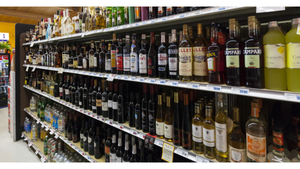SECOND WAVE OF FALLOUT HITS MAD COW 2004-03-15 (1)
WASHINGTON -- Hopes that mad cow disease would fade quickly from consumer memory have themselves disappeared over the past week, as both supermarkets and government regulators came under scrutiny for their actions surrounding the first case of bovine spongiform encephalopathy in the United States, and the ensuing recall of potentially tainted beef.Congress ordered both criminal and administrative
March 15, 2004
ROBERT VOSBURGH
WASHINGTON -- Hopes that mad cow disease would fade quickly from consumer memory have themselves disappeared over the past week, as both supermarkets and government regulators came under scrutiny for their actions surrounding the first case of bovine spongiform encephalopathy in the United States, and the ensuing recall of potentially tainted beef.
Congress ordered both criminal and administrative probes into the health and condition of the infected Holstein, while a Seattle law firm brought the first suit involving the recall against Kroger-owned Quality Food Centers.
An additional salvo has been fired by certain meat packers pushing for private availability of BSE tests. The processors are publicizing the U.S. Department of Agriculture's ban on third-party methods to detect the disease; in response, the USDA is working on a plan that will dramatically increase the number of cattle tested by the government for BSE -- from 20,000 last year to at least 10 times that number this year. The agency argues privatization of testing would give consumers a false sense of security.
To date, the largest direct impact on retailers has been the lawsuit filed by the firm of Hagens Berman, charging that Bellevue-based QFC failed to warn customers who purchased the recalled meat in their stores in violation of the Washington Product Liability Act.
Gary Rhodes, Kroger's director of corporate communications, told SN that QFC reacted in a timely manner by voluntarily removing from sale all ground beef purchased from suppliers identified in the USDA notice before a formal withdrawal was announced.
"As you know, the media coverage of the BSE issue was immediate and very extensive, particularly in Washington state. We broadly disseminated what we were doing at store level through numerous media interviews, as we believe this is the fastest and most effective way to quickly notify the public of product issues," he said.
The attorneys, representing a family that purchased and ate some of the recalled meat, have requested class-action certification, which would open the door for additional consumers to join the complaint.
"The plaintiffs want to try and regulate the industry so that when retailers like QFC supply potentially deadly product, they tell their customers that they have bought the product and shouldn't consume it," Styant-Browne said.
According to the complaint, the only notice QFC gave shoppers was through small signs posted in stores Dec. 27, 2003 -- four days after the USDA announced the BSE discovery and the recall. The lawsuit argues QFC had loyalty card data from its Advantage Card program and should have used it to contact meat-buying customers directly as soon as it found it was selling recalled product.
"The Act imposes a specific duty on that manufacturer to notify purchasers of the product," Nick Styant-Browne, the plaintiff's attorney, told SN. "Where you have a discount card system, the manufacturer -- in this case, QFC -- has the names and phone numbers of each and every one of its customers who purchased the contaminated meat. They didn't notify anyone individually."
QFC reground the meat in stores and, therefore, is liable as a "manufacturer" under the law, Styant-Browne added. The plaintiffs are seeking damages that include medical monitoring of their health for up to 30 years, which some disease experts said could be the incubation period for the fatal human variant of BSE, called new variant Creutzfeldt-Jakob Disease.
There are questions on the national level as well. The General Accounting Office is reviewing the USDA's handling and management of the recall, with a focus on how it grew to nearly four times the original quantity. On Dec. 23, 2003, the USDA's Food Safety and Inspection Service initiated a Class II -- lower-risk -- recall of meat from the group of animals that included the infected cow. Weeks later, the USDA revised its estimate of affected product to nearly 38,000 pounds, though the recall notice was never updated.
Additionally, officials estimated that 17,000 pounds were likely eaten or disposed of by consumers.
The Agriculture Department is under pressure to determine the true health and condition of the infected cow. At issue is whether the Holstein was actually a downer, or whether it was ambulatory -- an important distinction since it points to possible holes in the USDA's much-touted BSE safety net.
"If this was not a downer, then it means that the USDA's policy was seriously flawed," testified one industry expert before a House sub-committee.
Some reports contradicted the original downer observation, and state the animal was walking prior to slaughter. Even department officials conceded last month that the cow may have gotten back up after falling. The discrepancies are now the subject of a criminal investigation to determine if records were falsified after the fact.
Until that time, only downer animals were tested by federal inspectors for mad cow disease, and critics of the current monitoring system note the cow otherwise might have gotten into the food supply. A House committee is reviewing documents and reports related to the case. Officials associated with the panel said the probe is in its "early stages."
Meanwhile, consumer confidence in the safety of the U.S. beef supply remains high. Numerous polls reflect the American public places a high level of trust in government agencies to sufficiently monitor the processing and distribution of products. (See story, Page 58.)
About the Author
You May Also Like




